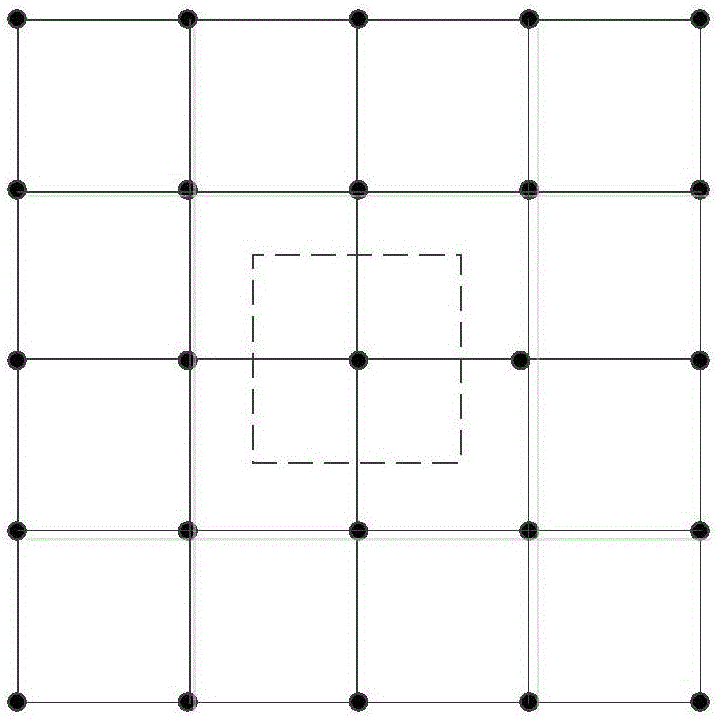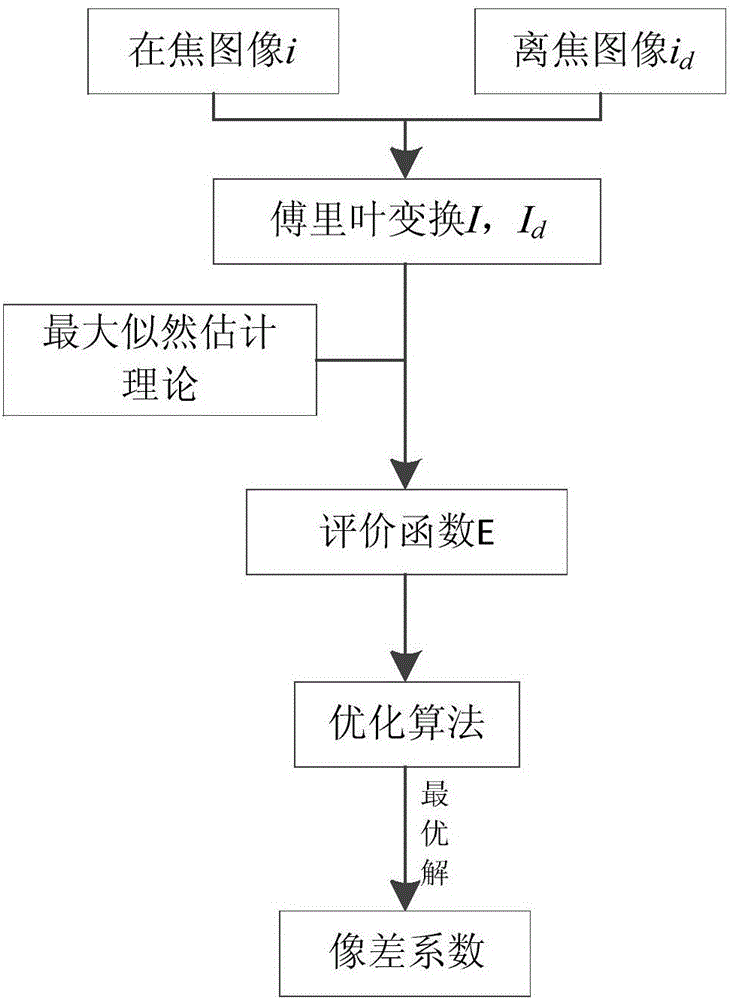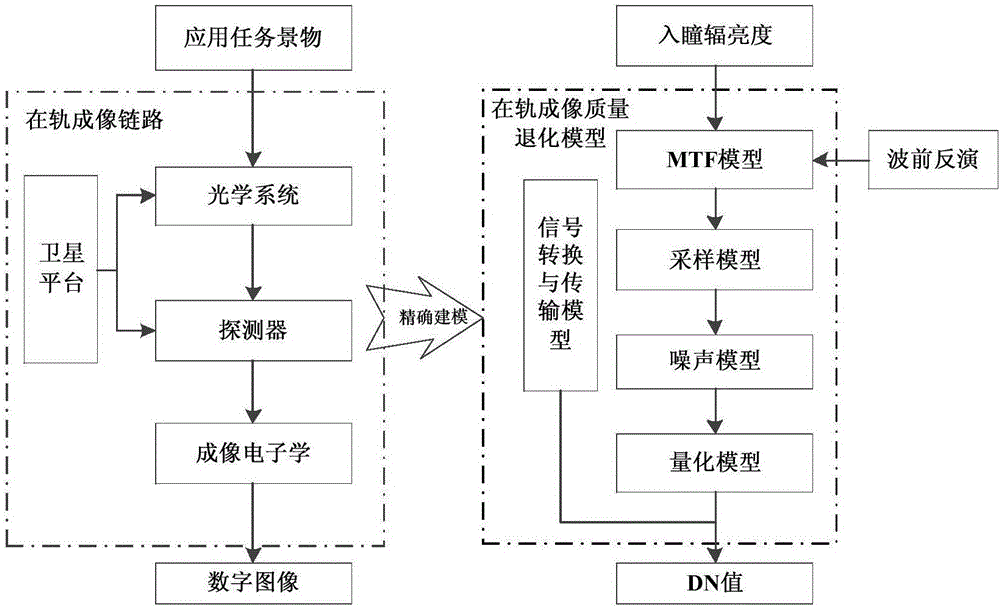Optical satellite in-orbit imaging simulation method based on wave front inversion
A technology of optical satellites and simulation methods, applied in design optimization/simulation, special data processing applications, instruments, etc., can solve the problem of not fully reflecting the influence of the spatial variation characteristics of the coupling characteristic transfer function on imaging quality, and the inapplicability of diffractive imaging systems And other issues
- Summary
- Abstract
- Description
- Claims
- Application Information
AI Technical Summary
Problems solved by technology
Method used
Image
Examples
specific Embodiment approach 1
[0024] Specific embodiment one: what this embodiment records is a kind of optical satellite in-orbit imaging simulation method based on wavefront inversion, and described method steps are as follows:
[0025] Step 1: Based on the in-focus image and out-of-focus image of the optical satellite, using the spatial position relationship between the object field of view and the image, the two images are divided into blocks;
[0026] Step 2: Combining the block results of Step 1, use PD technology to invert the wavefront aberration of each field of view and direction;
[0027] Step 3: Construct a complex aperture function based on the wavefront aberration calculated in step 2, and perform normalized autocorrelation processing on the complex aperture function to obtain the MTF of different fields of view and directions of the system;
[0028] Step 4: Combining the modeling and characterization of signal transmission and conversion, sampling, noise, and quantization processes, establis...
specific Embodiment approach 2
[0030] Specific embodiment two: a kind of optical satellite on-orbit imaging simulation method based on wavefront inversion described in specific embodiment one, the specific steps of described step one are as follows:
[0031] Firstly, determine the central position of the blocks in different directions and fields of view on the image (for details, refer to the typical fields of view considered in optical design, that is, central field of view, sub-field of view, and full field of view), and select multiple directions on the image evenly, For different fields of view and different directions, select the appropriate block size so that all blocks can cover the entire image, and design overlapping areas between blocks, and adopt different block strategies according to different systems and application requirements.
specific Embodiment approach 3
[0032] Specific embodiment three: a kind of optical satellite on-orbit imaging simulation method based on wavefront inversion described in specific embodiment one, the specific steps of described step two are as follows:
[0033] Combining the block results of step 1, take the center of each block as the origin, establish an orthogonal rectangular coordinate system, and mark the center coordinates of each image block as (x a ,y b );
[0034] Using PD technology, the wave aberration coefficient corresponding to each block is calculated. The wave aberration function is accurately fitted by the Zernike polynomial. The model is:
[0035]
[0036] Where α is the aberration coefficient, K is the total number of items, Zi is the i-th item of the Zernike polynomial, and W is the wavefront aberration;
[0037] Let i(x a ,y b ) is the intensity distribution on a block of the focal plane image, i d (x a ,y b ) is the intensity distribution on the corresponding block of the defo...
PUM
 Login to View More
Login to View More Abstract
Description
Claims
Application Information
 Login to View More
Login to View More - R&D
- Intellectual Property
- Life Sciences
- Materials
- Tech Scout
- Unparalleled Data Quality
- Higher Quality Content
- 60% Fewer Hallucinations
Browse by: Latest US Patents, China's latest patents, Technical Efficacy Thesaurus, Application Domain, Technology Topic, Popular Technical Reports.
© 2025 PatSnap. All rights reserved.Legal|Privacy policy|Modern Slavery Act Transparency Statement|Sitemap|About US| Contact US: help@patsnap.com



